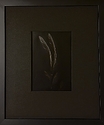This is correct.
I understand what you mean, but Drew is right w.r.t. the standard vocabulary. At some point, "additive" and "subtractive" made their way into this particular vocabulary and while they are technically speaking confusing in the sense that they confound characteristics of the light source with the process of exposing a light-sensitive material, it's the terminology we're kind of stuck with. The background to this somewhat odd 'additive' construct can relate to two concepts:
1: Exposure systems with three discrete light sources whose color is mixed (added up) to make the exposing light. A practical example is the Philips PCS2000 enlarger, which in fact used 3 bulbs.
2: Exposure methods in which the exposure is built from three consecutive exposures, one after the other, each with a distinct wavelength distribution.
It's not entirely clear (and practically, it doesn't really matter either) which of these gave rise to the additive/subtractive printing nomenclature we use today. In common parlance, we have either way ended up with the notion that 'additive exposure' refers to the use of narrow-band red, green and blue light, while 'subtractive exposure' refers to the use of a single white light source that's filtered with M, Y and optionally C filters. Again, is it technically entirely correct or conceptually clear? No. In that sense you have a point.
Yes, I understand what you mean and that's technically more correct. It's also not just in theory either. You really don't need to filter with (the right) LEDs or lasers. It's true additive in the most strict sense of the word - although not necessarily in a temporal sense (see #2 above).
The required power is ultimately a question of what kind of printing times you want on what kind of surface area of the paper, keeping the sensitivity of the paper in mind (this is more or less constant for available papers in the West). Diffusion need not be very complex as I've indicated earlier, but it'll come at the cost of light output since a considerable amount of light is lost in a diffusor.
In practice, if you're talking about a solid state (semiconductor) laser, you'd be looking at power levels of well over 10W per color channel to get exposures similar to a system like a 35mm Durst M305. I do NOT recommend anyone to experiment with lasers at such power levels; it's a major hazard to one's vision as it takes just a fraction of a second of unfortunate stray exposure via a mirrored surface etc. to cause permanent eye damage. It's (almost literally) playing with fire!
Not by definition and in practice it really depends on the wavelength distribution of the color channels, as
@Milpool points out.










